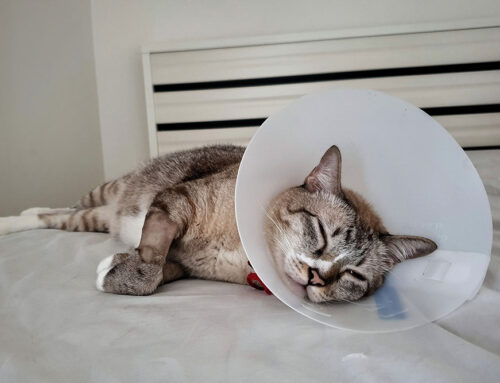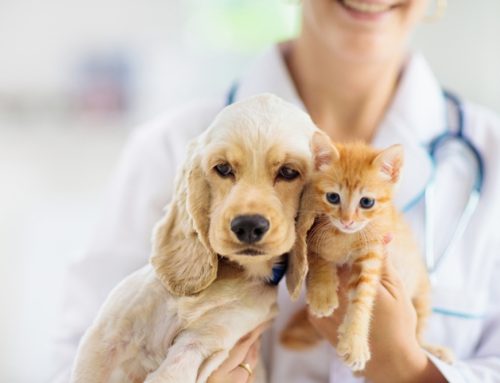Earthquake! is the thought that springs into your still-sleepy mind at 2 a.m. when your shaking bed startles you awake. And, although an earthquake would be bad enough, the reality of the situation might be worse. Flipping on the lights, you notice your sweet dog scratching and rubbing against the bed. His skin is red and inflamed, his fur is thinning in areas, and there are tiny black dots crawling all over him.
“When was the last time I remembered to put on some of that flea medicine I picked up from the pet supply store?” you ask aloud to your four-legged pal as if he would answer.
If your pup could talk, he’d tell you that there are better options out there. Unfortunately, many flea products readily available over the counter are not of the highest quality. Some aren’t fully effective for the labeled amount of time, some don’t work at all, and some cause adverse side effects, ranging from local skin reactions to seizures to even death.
At Lebanon Animal Hospital, we recommend Bravecto for flea control. Bravecto is newer to the market (so fleas haven’t had a chance to build up resistance), and it lasts three months (so you don’t have to worry about administering it every month). Giving your pet Bravecto is easy: It comes as a tasty chew that dogs love and a convenient topical for cats.
Now, it’s time for the bad news. Let’s get down and dirty with fleas, their life cycle, and why you need to get rid of these tiny, blood-sucking pests.
If you’ve seen even just one flea on your pet, that means your home is also infested with these parasites. Adult fleas—the fleas you can actually see on your pet—make up only 5 percent of the flea population in your home. So, what other kinds of fleas are hiding where you can’t see them?

FLEA LIFE CYCLE
Eggs: 50 percent of the total flea population
Flea eggs can take anywhere from 2 to 28 days to hatch after the adult female lays them on your pet and they drop to the ground (your carpet).
Larvae: 35 percent of the total flea population
The larval stage can last 4 to 24 days during the summer, but up to 200 days the rest of the year. Flea larvae survive on waste from adult fleas and organic debris found deep in your carpets, under furniture, along baseboards, and in cool, shady areas outside where your pet hangs out. Flea larvae hide and avoid the light as much as possible, so cleaning pet bedding, carpeting, and under furniture is a must.
Pupae: 10 percent of the total flea population
Wrapped in a cocoon, a flea pupa can take 5 to 14 days in ideal conditions to emerge as an adult. Without stimulation (vibrations, physical pressure, carbon dioxide, or heat), the pupae can stay in their cocoons for up to 9 months, an important fact to remember when treating your house. The cocoon is so protective, the pupae cannot be killed by insecticides, only becoming vulnerable when they emerge as adults.
Adults: 5 percent of the total flea population
The adult flea is the only stage attracted to light. It will head out to find its first meal, beginning to feed 10 seconds after landing on a host. Within 24 hours after feeding, a female flea will begin laying up to 40 eggs per day for the next 3 weeks of her life. This entire life cycle can be completed in as few as 14 to 28 days, depending on environmental conditions.
Did You Know?
Fleas do more than keep you and your pets awake at night. Fleas can cause:
- Anemia
- Plague
- Typhus
- Tularemia
- Tapeworms in cats and dogs
Tips for treating and preventing fleas
- Treat all pets with a high-quality, year-round flea preventive (Bravecto).
- Treat your environment:
- Vacuum all areas where your pet likes to lay, under furniture, and along baseboards. Don’t forget the furniture itself! Then, remove that vacuum bag and throw it away or bleach out the cannister.
- Treat all those areas you vacuumed with an insecticide that includes an insect growth regulator. Ask us for product recommendations.
- Wash all of your pet’s bedding and toys in hot water.
- Don’t give up! You can still see adult fleas in your house and on your pet shortly after starting treatment. It will take time for the flea pupae to emerge as adults so they can be killed.
Ready to protect your pet, your family, and your home from fleas? Call our office at 615-444-4422 today.








Leave A Comment